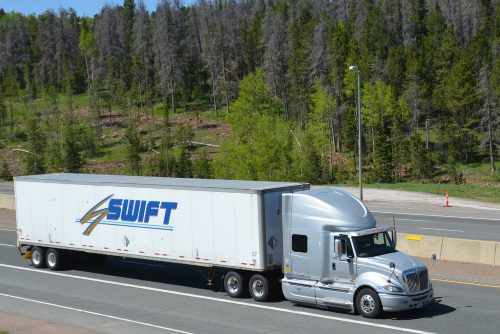The Federal Highway Administration released its very first “Highway Freight Conditions and Performance Report” to Congress on July 6; a report mandated by the Fixing America’s Surface Transportation or “FAST” Act of 2015.
Based on 2015 data, the report tapped into FHWA’s Freight Performance Measurement program to analyze the impacts of congestion and determine the operational capacity and efficiency of key freight routes throughout the U.S.
The agency said its data indicates that the National Highway System is handling a record amount of freight, with trucks moving nearly 60 percent of the nation’s total freight volume and close to 70 percent of total yearly freight value.
FHWA added that the FAST Act officially designated a National Highway Freight Network or “NHFN” and established a national policy of maintaining and improving the conditions and performance of this new network. Furthermore, it required the development of a regular report on the conditions and performance of the NHFN. This chapter serves as the first of these reports.
According to the agency’s latest data, the NHFN consists of 51,029 centerline miles, including 46,947 centerline miles of Interstate and 4,082 centerline miles of non-Interstate roads. Based on 2014 international roughness index data from the Highway Performance Monitoring System, approximately 77 percent of those pavement miles were rated as having “good” ride quality, 19 percent had fair ride quality, and 4 percent had poor ride quality.
The National Bridge Inventory is used to identify current bridge ratings for bridges on the NHFN, FHWA noted in its report, and its analysis showed there are approximately 57,600 bridges on the NHFN. Around 4.3 percent of those bridges were rated as structurally deficient. Most of these structurally deficient bridges are 25 years and older, and over half are more than 50 years old. These findings have implications for future maintenance and funding needs as well as impacts to operations.

